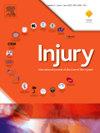干预创伤后心理困扰的有效性:系统回顾。
IF 2.2
3区 医学
Q3 CRITICAL CARE MEDICINE
Injury-International Journal of the Care of the Injured
Pub Date : 2025-02-01
DOI:10.1016/j.injury.2024.112090
引用次数: 0
摘要
背景:创伤性损伤对身体和心理造成重大挑战,往往导致心理困扰,包括焦虑、抑郁和创伤后应激症状。尽管人们认识到创伤康复需要心理护理,但专门针对创伤性损伤患者的有效干预措施的经验证据有限,导致实践与证据之间存在差距。目的:本综述旨在评估心理和行为干预对减少创伤后成人心理困扰的有效性。方法:本系统评价遵循已发表的方案(CRD4202342946),并遵循系统评价和荟萃分析首选报告项目(PRISMA)清单和系统评价报告项目的无荟萃分析综合(SWiM)。同行评议的研究通过MEDLINE、APA PsycInfo、CINAHL和Embase数据库进行检索。符合条件的研究涉及18岁及以上经历过身体创伤需要立即就医的成年人。没有纳入涉及神经损伤和/或军事人员的研究。英语和非英语文章都被考虑。采用效应方向作为综合方法,偏倚风险采用Cochrane有效实践与护理组织(EPOC 9)九项评估工具进行评估。结果:共有6项研究符合审查资格标准。在干预的性质、时间和持续时间方面存在相当大的异质性,但所有干预都是在损伤后3个月内进行的。大多数研究报告了积极的干预效果,没有不良反应的报道。认知行为疗法(CBT)是所有研究中报道最多的干预措施。结论:回顾结果强调了初步证据支持CBT作为减少创伤后心理困扰的可行选择。然而,这可以解释为CBT在文献中的主导地位,因为它的结构化性质,可用性和研究适用性,潜在地限制了替代治疗方法的可见性。此外,这些发现受到研究局限性的限制,包括样本量小、损伤类型和严重程度的异质性、依赖于自我报告的结果以及有限的随访数据。未来的研究应包括纵向随访评估和探索替代治疗方法,以促进我们对有意义的创伤康复方法的理解。本文章由计算机程序翻译,如有差异,请以英文原文为准。
Effectiveness of interventions for psychological distress following traumatic injury: A systematic review
Background
Traumatic injury poses significant physical and psychological challenges, often resulting in psychological distress, encompassing symptoms of anxiety, depression and post-traumatic stress. Despite the recognised need for psychological care in trauma rehabilitation, there is limited empirical evidence of effective interventions tailored specifically for individuals with traumatic injuries, leading to a practice-evidence gap.
Objectives
This review aimed to evaluate the effectiveness of psychological and behavioural interventions for reducing psychological distress in adults following traumatic injury.
Methods
This systematic review followed a published protocol (CRD4202342946) and adhered to the Preferred Reporting Items for Systematic Reviews and Meta-Analyses (PRISMA) checklist and the Synthesis Without Meta-analysis (SWiM) in systematic reviews reporting items. Peer-reviewed studies were identified through searches of MEDLINE, APA PsycInfo, CINAHL and Embase databases. Eligible studies involved adults aged 18 and older who had experienced physical trauma requiring immediate medical attention. Studies involving participants with neurological injuries and/or military personnel were not included. Both English- and non-English-language articles were considered. Effect direction was employed as the method of synthesis and risk of bias was assessed using the Cochrane Effective Practice and Organisation of Care (EPOC 9) nine-item assessment tool.
Results
A total of six studies met the review eligibility criteria. There was considerable heterogeneity across the interventions in terms of their nature, timing and duration, however all interventions were delivered within 3-months post-injury. Most studies reported positive intervention effects, with no adverse effects reported. Cognitive Behavioural Therapy (CBT) was the most reported intervention across the studies.
Conclusions
The review findings highlight the preliminary evidence supporting CBT as a viable option for reducing psychological distress following traumatic injury. However, this may be explained by the dominance of CBT in the literature due to its structured nature, availability and suitability for research, potentially limiting the visibility of alternative therapeutic approaches. Further, these findings are constrained by study limitations, including small sample sizes, heterogeneity of injury types and severity, reliance on self-reported outcomes, and limited follow-up data. Future research should aim to include longitudinal follow-up assessments and explore alternative therapeutic approaches to contribute to our understanding of meaningful trauma rehabilitation methods.
求助全文
通过发布文献求助,成功后即可免费获取论文全文。
去求助
来源期刊
CiteScore
4.00
自引率
8.00%
发文量
699
审稿时长
96 days
期刊介绍:
Injury was founded in 1969 and is an international journal dealing with all aspects of trauma care and accident surgery. Our primary aim is to facilitate the exchange of ideas, techniques and information among all members of the trauma team.

 求助内容:
求助内容: 应助结果提醒方式:
应助结果提醒方式:


